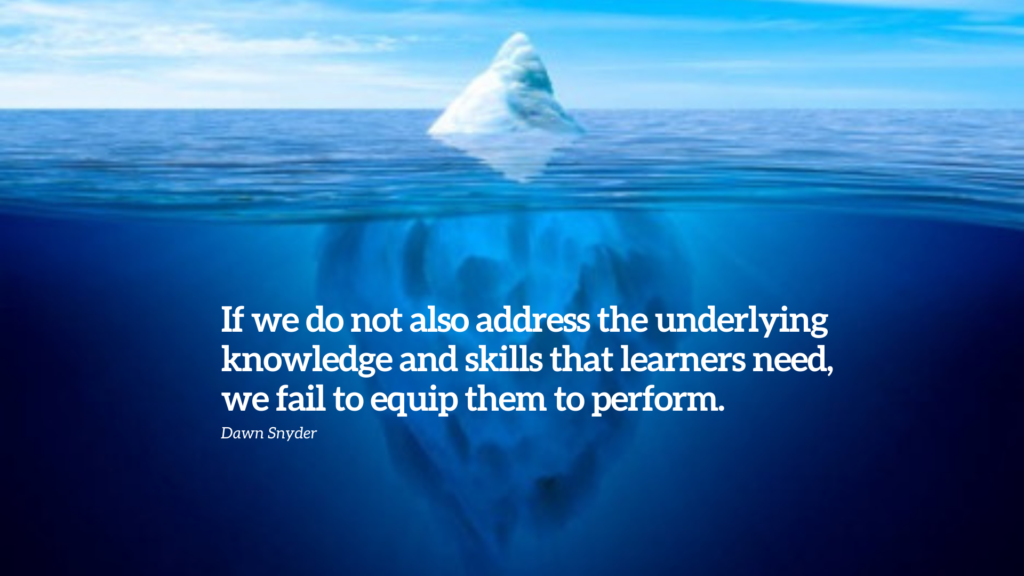I’m often asked to review training that is failing. One of the areas I examine is the instructional strategy for presenting content. A common design flaw is to present content in the form of a process or a procedure, ignoring the instruction learners need to develop underlying knowledge and skills. Why is this approach so problematic?
Instructional designers and content experts are comfortable with defining and teaching processes and procedures. Organizing a learning outcome into steps is a great way to document what we expect workers to do. It illuminates the activities the worker must complete, and it presents the order for completion. It a natural way to quickly organize a training program, and we can confirm that we’ve “covered” the content from beginning to end. To support performance, we often add other useful tips or hints to help users avoid common mistakes or expensive errors. We may even practice certain steps. But this approach can go terribly wrong when learners need to have mastered specific skills or knowledge to successfully complete a step in a procedure.
Competencies critical to performance are referred to as “domain knowledge.”
The domain knowledge needed to perform tasks is like the part of an iceberg under the water line—not easily visible but definitely there. Teaching only the the step is like focusing on just the tip of the iceberg. If we do not also address the underlying knowledge and skills that learners need, we fail to equip them to perform.
Consider a step Civil Engineers perform in a surveying task: “Calibrate survey equipment.” To calibrate survey equipment, learners need to know the features of the equipment being used, the calibration process for each piece of equipment, the tolerances that are acceptable in the calibration test, how to read all the gauges and dials, how to perform any necessary calculations…and the list goes on. Because this example relies on using equipment, it may be easy to identify and uncover underlying competencies—at least those related to the equipment. The amount and degree of competency required to perform a more expansive or abstract skill, such as math computations, may be more challenging to define.
Ponder another example – focusing on the procedure for developing strategic programs, such as “Facilitate a stakeholder review of the business case.” Successfully facilitating a stakeholder review is not just about creating an agenda or convening a meeting. It requires facilitation skills, consulting skills, and meeting management skills (to name a few). Instructional designers—and definitely subject matter experts—may underestimate the skills needed or discount the importance of applying those skills to achieve successful performance.
There are a number of reasons that organizations overuse a process approach to training, and the issue usually originates in the analysis phase. The most common is assuming that the target audience already has the required domain knowledge. The design team may focus on the “ask” and provide the requested content without purposefully considering current skill levels or performance requirements. Subject matter experts often forget how they acquired their own domain knowledge and take that knowledge for granted. Another common reason that design teams organize training around content is that it is the fastest way to develop a training program. Unfortunately, this approach doesn’t place the success of the learners at front and center. After all, how hard could facilitating a meeting possibly be?
If you have a training program that isn’t delivering the intended performance impact, examine the instructional strategy to determine whether all the necessary knowledge and skills are included (or required to enter the program). Putting all the necessary instructional supports in place will place learners on the path to success.

